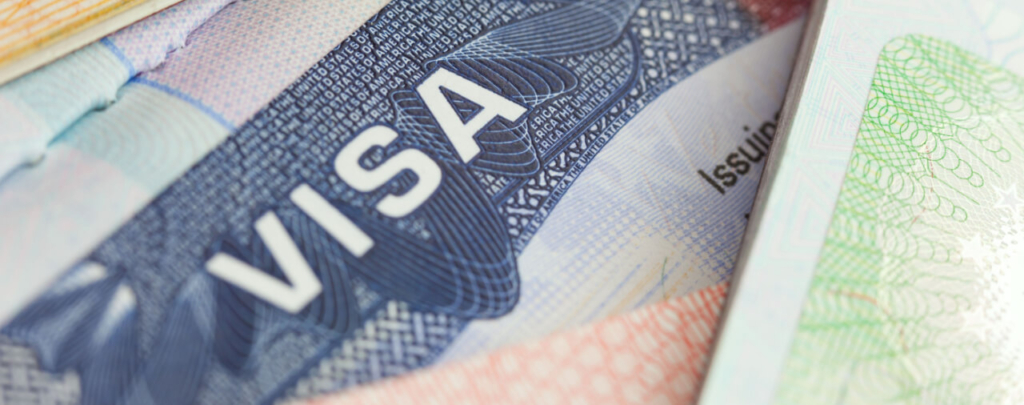- Introduction to Premium Processing for Form I-129 Petitions
- How Does the Premium Processing Service Work?
- Which Form I-129 Petitions Are Eligible for Premium Processing?
- Who Can Request Premium Processing?
- Form I-907 Filing Process and Fees
- Additional Information
- Conclusion: Premium Processing for Form I-129 Petitions
Introduction to Premium Processing for Form I-129 Petitions
The United States Citizenship and Immigration Services (USCIS) allows certain petitioners who have filed a Form I-129, Petition for a Nonimmigrant Worker, to request speedy processing of the Form I-129 through the Premium Processing Service. In order to request premium processing, the petitioner must have filed a Form I-129 in a category that allows for premium processing, and must file a Form I-907, Request for Premium Processing Service, along with a fee. This article will explain the rules and benefits of the Premium Processing Service for nonimmigrant work visa petitions. To learn about using the Premium Processing Service to request premium processing of a Form I-140, Immigrant Petition for Alien Worker, please follow this link.
How Does the Premium Processing Service Work?
USCIS guarantees 15-calendar day processing of a Form I-129 through the Premium Processing Service. The 15-day period begins when USCIS receives USCIS will refund the premium processing fee if it fails to process the Form I-129 within 15 calendar days of the receipt of the Form I-129 with the Form I-907.1
It is important to note that “processed” does not necessarily mean that the Form I-129 will be approved or denied within 15 days. Rather, “processed” means that the petitioner should have a response from the USCIS within 15 days. The response may be an:
- Approval
- Denial
- Request for Evidence (RFE)
- Notice of Intent to Deny
- Notice of an investigation for fraud or misrepresentation2
If the USCIS issues a RFE or a Notice of Intent to Deny, the 15-day clock will start anew once USCIS receives a complete response from the petitioner.
Which Form I-129 Petitions Are Eligible for Premium Processing?
The following chart courtesy of the USCIS website lists the types of immigrant petitions that are eligible for premium processing:
| Designated Classification Within Form I-129 |
Corresponding Nonimmigrant Classification |
Availability Date1 | termination date2 |
|---|---|---|---|
| Treaty Trader | E-1 | June 1, 2001 | |
| Treaty Investor | E-2 | June 1, 2001 | |
| Alien in Specialty Occupation | H-1B | July 30, 2001 | |
| Temporary Worker performing nonagricultural services | H-2B3 | June 1, 2001
Resumed May 1, 2013 |
|
| Trainee or Special Education Exchange Visitor | H-3 | June 1, 2001 | |
| Intracompany Transferee, Executive or Manager Capacity | L-1A | June 1, 2001 | |
| Intracompany Transferee, Specialized Knowledge Professional | L-1B | June 1, 2001 | |
| A petitioner meeting certain requirements which seeks continuous approval of itself and some or all of its parents, branches, subsidiaries, and affiliates | LZ (Blanket L-1) |
June 1, 2001 | |
| Alien of extraordinary ability or achievements in the sciences, arts, education, business, or athletics | O-1 | June 1, 2001 | |
| Alien providing essential support services for a principal O-1 alien | O-2 | June 1, 2001 | |
| Internationally recognized athlete or member of an internationally recognized entertainment group | P-1 | June 1, 2001 | |
| Essential Support Alien, highly skilled, who performs support services essential to the successful performance of the principal P-1 alien | P-1S | June 1, 2001 | |
| Artist or Entertainer under a Reciprocal Exchange Program | P-2 | June 1, 2001 | |
| Essential Support Alien, highly skilled, who performs support services essential to the successful performance of the principal P-2 alien | P-2S | June 1, 2001 | |
| Artist or Entertainer in a Culturally Unique Program | P-3 | June 1, 2001 | |
| Essential Support Alien, highly skilled, who performs support services essential to the successful performance of the principal P-3 alien | P-3S | June 1, 2001 | |
| International cultural exchange alien | Q-1 | June 1, 2001 | |
| Alien in a Religious occupation | R-1 | July 30, 2001 and reinstated July 20, 20094 | |
| NAFTA professional, Canada | TN-1 | July 30, 2001 | |
| NAFTA professional, Mexico | TN-2 | July 30, 2001 |
1. The availability date is the date that the classification was initially deemed eligible for Premium Processing Service.
2. The termination date reflects the last day that USCIS accepted filings requesting that specific classification. If a date is entered in this column, that classification is currently ineligible for filing.
3. On March 5, 2015, USCIS suspended the adjudication of Form I-129 H-2B petitions. As a result, effective March 6, 2015, USCIS will not accept premium processing requests for H-2B petitions. If a petitioner requested premium processing before March 5, 2015 and the agency did not act on the case within the 15 calendar day period, USCIS will issue a refund. USCIS lifted the temporary suspension of the adjudication of Form I-129 H-2B petitions on March 17, 2015 but premium processing requests for H-2B petitions remain suspended. On April 17, 2015, USCIS announced that it would resume processing premium processing request on April 20, 2015.
4. Premium Processing for nonimmigrant religious worker visa petitions was initially suspended on November 28, 2006. On July 20, 2009, USCIS resumed acceptance of Form I-907 for I-129 petitions seeking R-1 classification but only from those petitioners who have previously completed a successful on-site inspection at the location where the beneficiary will be employed.
If a Form I-129 is for an immigrant visa category not listed on the chart, it is not eligible for premium processing.
Please note that premium processing for most H1B petitions is currently suspended. For details on which H1B petitions are affected, please see our full article on the subject [see article].
USCIS notes that the Premium Processing Service is currently suspended for all Form I-129 petitions that request either a change of status or an initial grant of status for beneficiaries within the Commonwealth of the Northern Mariana Islands.
Premium processing does not accord any special cap benefits to H1B, H2B, and certain H3 classifications that have annual cap restrictions. Therefore, a petitioner should check if the Form I-129 in question in a cap-subject category is eligible for processing before requesting premium processing. If necessary, USCIS will apply a random selection process to all cap-subject petitions received in a given date when a sufficient number of petitions have been received to reach the cap. If a petition that was filed with a premium processing request is not selected, the fee will be returned.
Premium processing of Form I-129 petitions for R1 religious workers is only available for petitioners who have previously completed a successful on-site inspection at the location where the beneficiary will be employed.3
Who Can Request Premium Processing?
Only the petitioner who filed the Form I-129 may request premium processing (or the attorney-of-record as established by the filing of the Form G-28, Notice of Entry of Appearance as Attorney or Accredited Representative). Unless the immigrant visa applicant is a self-petitioner, the petition beneficiary may not request premium processing.
While the payment for the Premium Processing Service may be submitted by the petitioner, the attorney-of-record, or the beneficiary, the beneficiary cannot sign the Form I-907.
Form I-907 Filing Process and Fees
Using the Correct Form I-907
Before filling out the Form I-907, it is essential to ensure that the correct version of the Form I-907 is being used.
In order to check, USCIS advices that the petitioner compare the “edition date” on the lower right corner of the Form I-907 in question to the “edition date” listed on USCIS’s “I-907, Request for Premium Processing Service” webpage (www.uscis.gov/i-907) [link].
The Form I-907 will be accepted if both dates match, or if the current date listed on the USCIS webpage is later, but there is a designation “Y.”
Filing the Form I-907
The petitioner or attorney-of-representative must complete and sign the Form I-907 in accordance with the instructions for the current version of the form (see instructions for the current version of the Form I-907 as of Jan 2, 2016).
The petitioner may file the Form I-907 concurrently with the Form I-129 or for a Form I-129 that is already pending.
If the petitioner is filing the Form I-907 concurrently with the Form I-129, it must file both the Form I-129 and Form I-907 at the Service Center designated as the appropriate filing location on the Form I-129 instructions.
If the petitioner is filing the Form I-907 to request premium processing of an already-pending Form I-129, it must submit the Form I-907, along with a Form I-797, Receipt Notice, for the Form I-129, to the USCIS service center where the Form I-129 is pending. If the petitioner received a transfer notice, that means that the Form I-129 is being processed at the service center designated on the transfer notice rather than the service center that the Form I-129 was submitted to. To request premium processing for such a Form I-129, the Form I-907 should include a copy of the transfer notice and should be submitted to the transfer location.
If a standalone Form I-907 is filed at the wrong service center, USCIS may forward the Form I-907 to the correct service center. However, the 15-day period will not start until the Form I-907 is received at the correct service center.
USCIS will reject the Form I-907 and return the accompanying fee if the Form I-907 is filed concurrently with a Form I-129 at the wrong service center.
It is important to file the Form I-907 at the correct service center since a failure to do so will result either in the outright denial of the Form I-907 or a delay in the start of the 15-day premium processing period.
Fees
Please see our article [see article] on the current premium processing fees for Forms I-907 related to Forms I-129, which took effect on February 26, 2024.
Additional Information
Petitioners designated as not-for-profit entities may request discretionary expedited service in lieu of the Premium Processing Service. If expedited service is denied, the petitioner is still eligible to file for premium processing.
At no additional charge, USCIS will endeavor to provide speedy processing of a Form I-539, Application to Extend/Change Nonimmigrant Status filed by a dependent of the principal beneficiary if it is filed at the same time that the Form I-907 is filed for the principal. However, this is a courtesy service, and USCIS cannot guarantee faster processing of the Form I-539.
USCIS has a special telephone number and email address available for Premium Processing Service customers to address inquiries regarding the premium processing. The contact information can be found on the USCIS website.
The petitioner may provide a self-addressed envelope or courier package slip when filing the Form I-907 in order to obtain the results of the premium processing expeditiously.
Conclusion: Premium Processing for Form I-129 Petitions
The Premium Processing Service is a valuable tool to ensure expeditious processing of a Form I-129. Whether the Service is worthwhile depends on the circumstances of the petitioner and the specific case. While the Form I-907 and instructions may be found online, we highly recommend consulting with an experienced immigration attorney for assistance in requesting premium processing and for the entire nonimmigrant work visa petitioning process.
To learn about the Premium Processing Service for immigrant Form I-140 petitions, please read our full article.
- 8 C.F.R. 103.2(f)(1)
- 66 FR at 29682
- USCIS, Q&A’s, USCIS Announces Resumption of Premium Processing Service for R-1, reprinted in 86 No. 29 Interpreter Releases 1993-94 (Aug. 3, 2009)
RESOURCES AND MATERIALS:
“How Do I Use the Premium Processing Service?,” USCIS, October 26, 2015, available at http://www.uscis.gov/forms/how-do-i-use-premium-processing-service [link]
Kurzban, Ira J. Kurzban’s Immigration Law Sourcebook: A Comprehensive Outline and Reference Tool. 14th ed. Washington D.C.: AILA Publications, 2014. 1084-87, 859, Print. Treatises & Primers.





